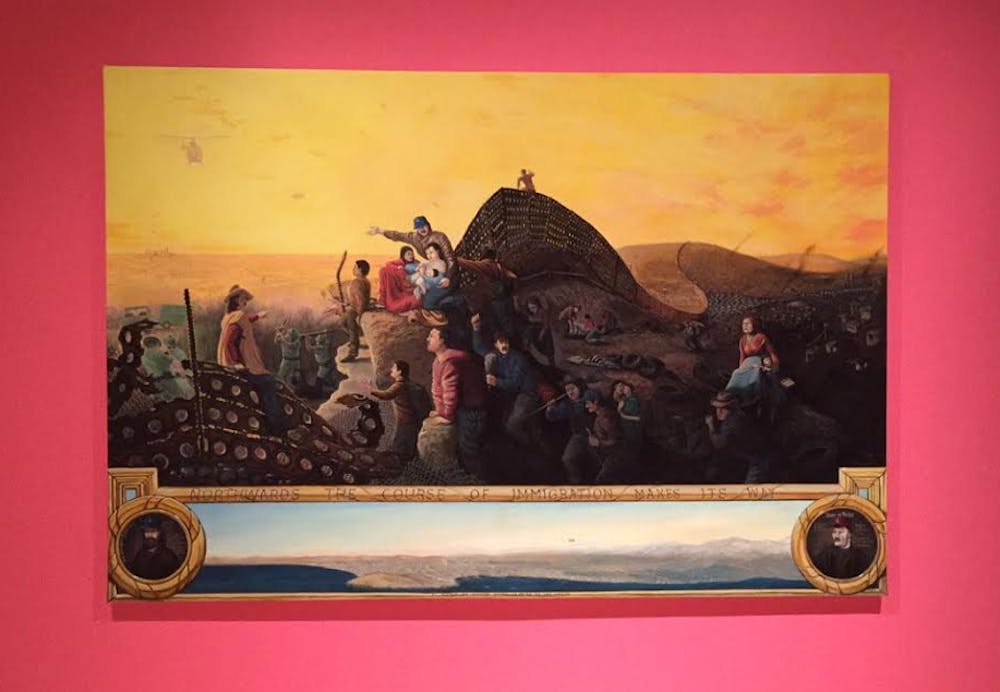ASU's mission statement states that inclusion and diversity is the way to seek answers and truth. “The Violence of Truth” sends its message in the same spirit.
The exhibit, curated by Professor Jose Bernardi, was carefully constructed in the summer to send a message that through our conflicts and struggle we find human truths.
"It's part of a larger exhibit we do at the museum where we invite artists to come in and look out our collection," Julio Morales, a curator at the ASU Art Museum, said. "We have about 12,000 pieces in our collection and the artist will choose work that resonates with them. Jose is more of a designer, so he chose work that really resonated with him as a professor, as an artist, as a mentor."
Katrina Montgomery, a communications coordinator for the museum, said the museum sometimes invites artists to create collections.
"The Violence of Truth is part of ASU Art Museum’s Encounter series, where we invite artists and scholars to work with the museum’s collection," Katrina Montgomery, a communications coordinator for the museum, said in an email.
Bernardi said he gave the topic a lot of thought before putting it together.
“It had been a topic that I was reflecting on for a while.” Bernardi said. “That is the idea that we all look for some type of order, what is the meaning of truth, what is the right way to do things and we increasingly inhabit a planet with a lot of opinions and diverse ideas and in that search for truth we speak only to people that we agree with.”
The exhibit hosts a multitude of diverse Latin American pieces that are meant to seem in conflict with each other, much like people. The artwork is meant to be very realist relics of life through artist’s eyes.
“I spent great time looking at the collection to see what they had.” Bernardi said. “It’s like preparing a salad, you want to know what kind of lettuce you have or tomato."
“I wanted the space on the wall to have dialogue with the pieces so it was an interaction also of the space with the artwork and we created sort of three spaces, it was sort of a sequence of spaces to see everything. Then I thought how a space can create a dialogue and contradict fight.”
The artwork is meant to start a conversation by having pieces be vastly different from the one across from it and therefore reflect humanity’s own contradictions. Bernardi said he wanted to demonstrate tension in the way the artwork is placed and in that tension, possibly create a dialogue for observers of the exhibit.
"We painted the title wall gray and that same is gray is reflected on the utopia painting in the exhibition," Morales said. "He (also) painted this whole wall a magenta color and has only one painting on the huge wall to sort of highlight that piece to get more of a dynamic selection of the work."
The exhibit was strategically set up to have art with different viewpoints to create a conversation about people thinking differently.
"We ultimately have conflicts in this search for truth although it should be a goal of humanity,” Bernardi said.
The exhibit tries not only to display humanity’s work towards finding truths, but also the conflict humans face during that journey.
“We are at a university that is characterized because we are inclusive, we are open, we celebrate difference, we believe and I do believe that we get richer through that diversity,” Bernardi said.
The plethora of artwork shows its own diversity from different artists, styles and formats, part of Bernardi’s goal.
Reach the reporter at jaande31@asu.eduor follow @jackieanders327 on Twitter.
Like The State Press on Facebook and follow @statepress on Twitter.




